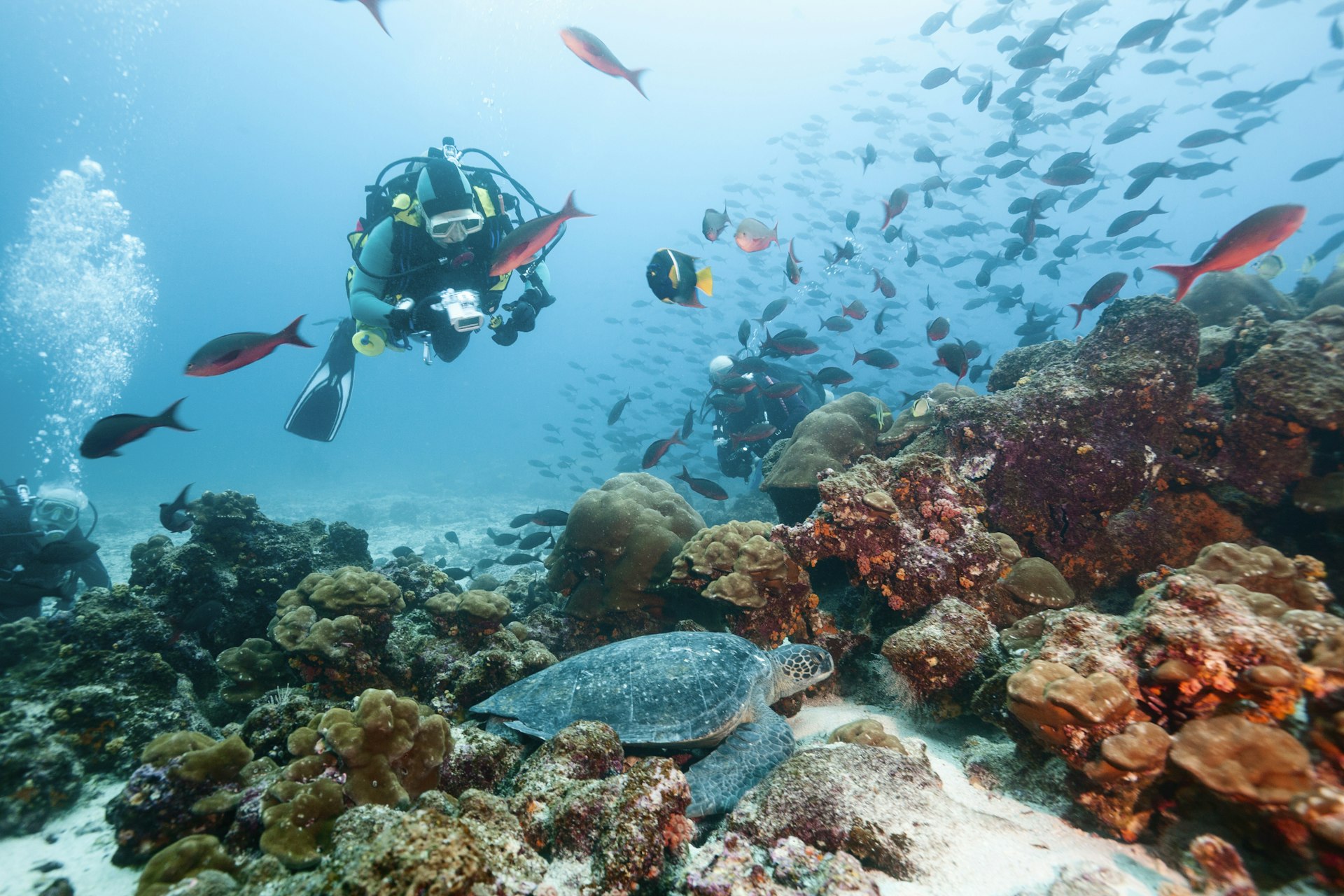Best time to visit Ecuador
5 min read
From the surf beaches of the Pacific coast and the snow-capped peaks of the Andes to the Galapagos Islands and the humid Amazon Basin, Ecuador serves up epic travel experiences in every season and all in an area only slightly larger than Colorado.
Compared to its enormous neighbors, Ecuador offers a taste of South America on a more bespoke scale. However, with such wildly differing environments, the timing of the busy and quiet seasons can vary widely depending on which part of the country you visit. When you visit will naturally be influenced by where you want to go and what you plan to do when you get there.
If you’re here to catch some surf and sun on the coast, aim for January through March. August to November is the best time for cruising down the Río Napo to a jungle lodge in the Oriente, while June to September is the best time for trekking in the Andes and enjoying Ecuador’s highland cities.
Whenever you come, some special facet of Ecuador’s diverse beauty will shine through, making your trip memorable. Here’s how best to plan your visit.
June to September is the best time for highland treks
Ecuador’s high season falls in the South American winter – an ideal time to explore the magical highlands of Ecuador. If you’ve dreamed of picking through tribal fabrics at the Otavalo market or trekking the multi-day Quilotoa loop, this is the time to come.
Though the temperature fluctuates a great deal from morning to night – and changes markedly as you gain altitude – this season is verdant, and the highlands are full of life. Thanks to the drier weather and the North American and European summer holidays, this is a busy time for tourism, with correspondingly high prices. Plan ahead and book early for travel at this time of year.
The colorful Incan celebration of Inti Raymi occurs at the summer solstice in June. The festivities are best experienced in highland locations such as Otavalo or at the archaeological site of Ingapirca near Cañar.
Rain is lessening in the Oriente in August while the sun still shines over the highlands. Día de Independencia is the big event on the cultural calendar, but the procession of La Virgen del Cisne (Virgin of the Swan) is also quite a spectacle, traveling 70km (43 miles) before ending in the city of Loja.
High season is still in full swing in September, but beaches remain muggy. Notable festivals include the Fiesta de la Mamá Negra in Latacunga, a joyous syncretization of Catholic, indigenous and African elements. Another lively event is the Fiesta del Yamor, a Kichwa harvest festival taking place in Otavalo.
October and November are the best months for budget travel and trips up the Amazon
Naturally, rain is part and parcel of a visit to the rainforest, but here’s some good news – the shoulder season is also the dry season in the Amazon Basin. This means low water levels and excellent conditions for spotting colorful birds and other active wildlife, with less risk of getting soaked in the process.
During the drier months of October and November, you’ll be able to traverse the jungle without so much boot-sucking mud, avoiding the curtains of heavy rain that descend on trekkers at other times of the year. This is also a good time to visit the Central Highlands – you’ll beat the crowds during this slow season, with the added bonus of lower prices for accommodations and tours.
The shoulder season winds down in November, but there are deals to be had before prices ramp up for the end-of-year holidays. On Día de los Difuntos (All Souls’ Day) on 2 November, it’s a highland tradition to eat a special baby-shaped bun and sip colada morada – a purple corn-based drink that is only consumed on this day.

December to May is the best time for Galápagos trips and beach adventures
Characterized by warm, sunny days with some tropical downpours in the afternoons, the wet season is actually a good time for expeditions to the Galápagos Islands and spending time on the beach. What? Visit the beach in the rainy season? We say yes! While showers are frequent, the rain doesn’t last long, and when the sun comes back out, the air feels cleansed and refreshed.
Along the coast, boat-based wildlife-watching, diving and snorkeling are enhanced by calm seas and excellent water clarity. This is also the prime season for surfers to enjoy consistent northwest swell at surf spots such as Montañita, while beach lovers can set up camp in whichever beachside fishing village or coastal party town suits their mood.
Christmas and New Year’s Eve, both public holidays, are big events in Ecuador. The prices may be higher but the festive atmosphere is electric. December usually means sunny weather in the Oriente, with refreshing warm days and afternoon rain showers along the coast. It’s also when the people of Quito celebrate the foundation of their town with dance, theater and music during the Fiestas de Quito.
Though prices fall after New Year’s festivities and Día de los Reyes in January, they rise again in time for Carnaval in February, when the colorful celebrations draw floods of visitors – Ambato and Cuenca are two popular places to celebrate. This is a great time for rafting near Tena, but the highlands are chillier and wetter.
Book well ahead for transport and accommodations during Semana Santa (Holy Week), which can spill into April. At other times in March, you’ll find lower prices across the country. It’s still rainy in the highlands, but it’s worth enduring a little wet weather to experience Quito’s processions on Good Friday. May represents the tail end of high season in the Galápagos, while the coast is beginning to cool off under gray skies. However, you may luck out with odd days of decent weather both on the coast and in the highlands.





